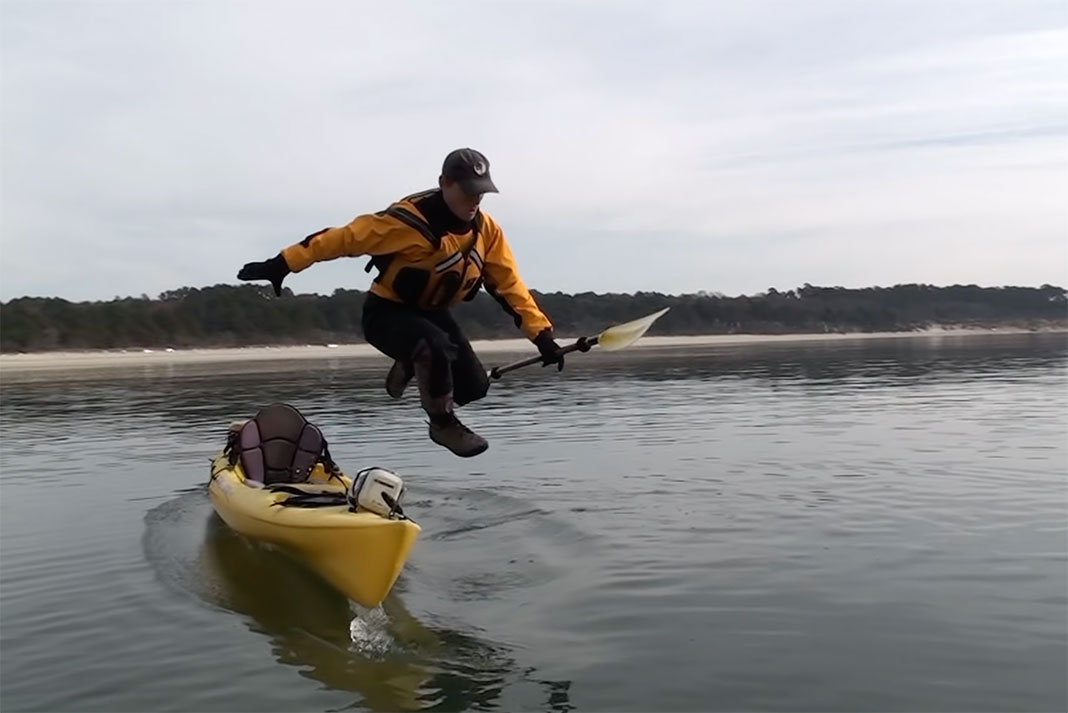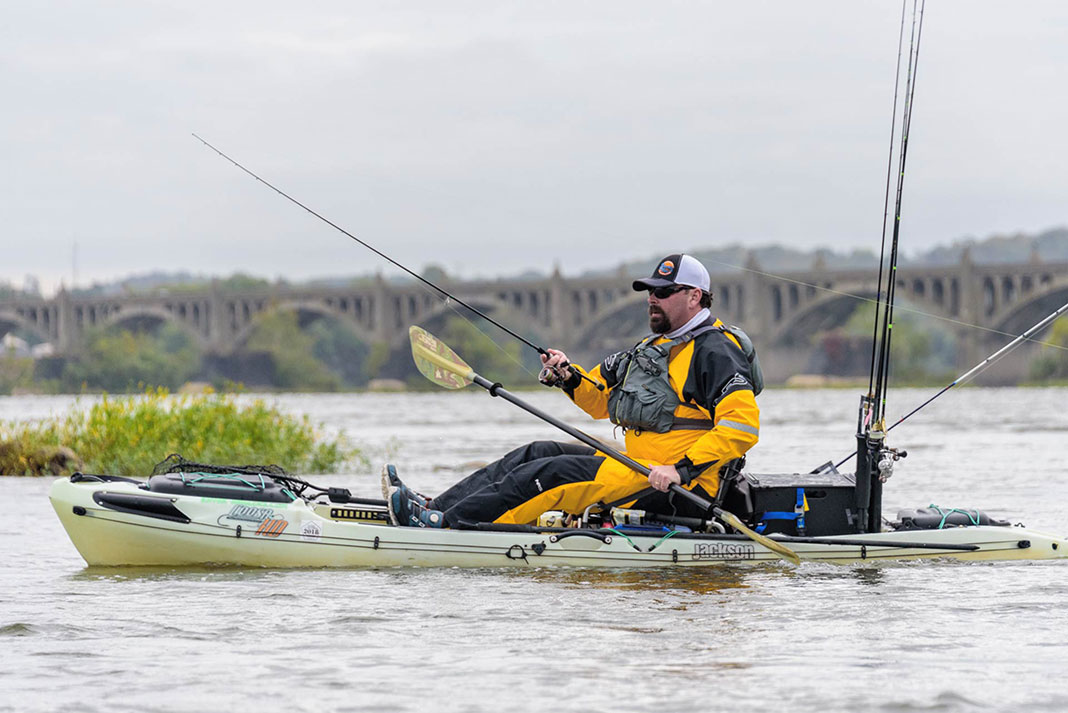Ten years ago, on a snowy January day, I stood up in my kayak, adjusted my drysuit and jumped into the water. The stunt was the first phase in a test of winter outwear. As expected, the drysuit was the winner, but it felt too bulky, heavy and tight for kayak fishing comfort. What a difference a decade can make. Sporting modern materials and improved designs, the latest generation of drysuits is worth taking the plunge again.
New Drysuits Look and Work Better
Despite the evidence from my little test, I didn’t start wearing a drysuit in the winter until more recently. I preferred taking a chance with waders and a rain jacket. But talking about cold-water wear with my buddies, kayak fishing guide Juan Veruete and RAM Mounts pro Brad Hole, I learned these guys wear their drysuits more than they wear their favorite jeans.

Veruete fishes year-round in the central Pennsylvania section of Susquehanna River. “After teaching paddlers for over a decade, I can say a swim never goes as expected,” he tells me. Victims can spend several minutes in the water.
Fishing the deep, cold lakes of the Pacific Northwest, Brad Hole wears his drysuit 12 months out of the year. In addition to protecting Hole from the elements, the suit offers another advantage. “A thin layer of air is trapped in the suit,” Hole points out. Combined with his life vest, the drysuit offers extra buoyancy.
Advanced Materials, Better Fit
One of the smallest changes has made a big difference in drysuit performance. David Feucht, account manager and pro team manager at NRS, points to the switch from metal to plastic zippers. “Plastic zippers are easier to maintain and use, reducing bulk and weight,” he says. Not only are the new zippers just as effective and way more comfortable, the durable material and construction add years to the life of a drysuit.
Advancements in materials lead to the biggest improvement in comfort and function. Jeff Turner, director of sales at Kokatat, has seen drysuits go from sweat box to comfort wear. The first major change was introducing waterproof, breathable materials.
“Gore-Tex was a game changer,” Turner states. Kokatat jumped in early and currently uses the most advanced Gore-Tex fabric. “Our first drysuits kept water out and heat in,” Turner remembers. Today’s materials allow heat and vapor to escape through microscopic holes in the material, while water and wind are stopped by a repellant outer layer.
Turner also points to advancements in fit. “Every suit we make is generated from a very technical pattern,” he says. To accommodate paddlers, the suits feature more material in the arms and torso to comfortably reach the water. He suggests a suit designed to be worn while seated. “Paddlers will spend most of their time sitting down,” Ideally, the material will not bunch up in the lap and stretch across the back. Cuffs shouldn’t slide up when the wearer moves.
A Good Kayak Fishing Drysuit is an Investment
For me, the biggest improvement is the drysuit’s appearance. Jared Rhind at Mustang Survival agrees. “I’m glad drysuits have dropped the Voltron look,” he laughs. Rhind remembers a time when he was embarrassed to wear his brightly colored, disco suit in public. “I wore clothes over my drysuit,” he admits. More fashionable colors and designs with a slimmer cut and fit look sophisticated and outdoorsy. “Now, I’ll wear my suit around town on the way to and from the water,” he says.

The downside of advanced drysuits is the price tag. A high-quality, breathable drysuit will run between $900 and $1,350. “It’s an investment in safety,” David Feucht says. To keep a paddler warm, dry and afloat requires taped seams, waterproof zippers, complicated construction and high-tech materials. Feucht says, “A cheaper suit will eventually wet out.” The material will not breath appropriately and the seals and gaskets will leak. “But if you treat a good drysuit well, it should last for decades.”
This article was first published in the Winter 2020 issue of Kayak Angler Magazine. Subscribe to Kayak Angler Magazine’s print and digital editions, or browse the archives.
Feel the fish bite, not the frostbite, with the best drysuits for kayak fishing. | Feature photo: Courtesy of NRS










Besides the practical, safety aspects of the flotation capabilities of a dry suit’s buoyancy with a little extra air trapped inside is purposefully blowing air into the suit via the neck gasket virtually inflating the dry suit to a Micheline Man look. You can literally float on top of the water – very relaxing, and humorous…and prone to be blown’ in the wind…but a weird and calming experience, especially the first time.
I just stop fishing until warmer weather…the uncomfortable fit, a very expensive investment, and invariably the cold weather makes you go pee more often. The fishing is very spotty, slow bite and our weather is unpredictable, so for roughly three months out of the year my Hobie Outback stays put away…for me, it just isn’t worth it.
Glad to see this article rerun today. I have recently been studying them as I hope to save up and order one in the summer of 2022. Nobody I trust more the the fine folks at Kayak Angler to steer me in the right direction. Thanks Ric!!
Great article , the modern dry suit , has so many functions and well worth the expense , it give the kayak angler just piece of mind in the cold winter months